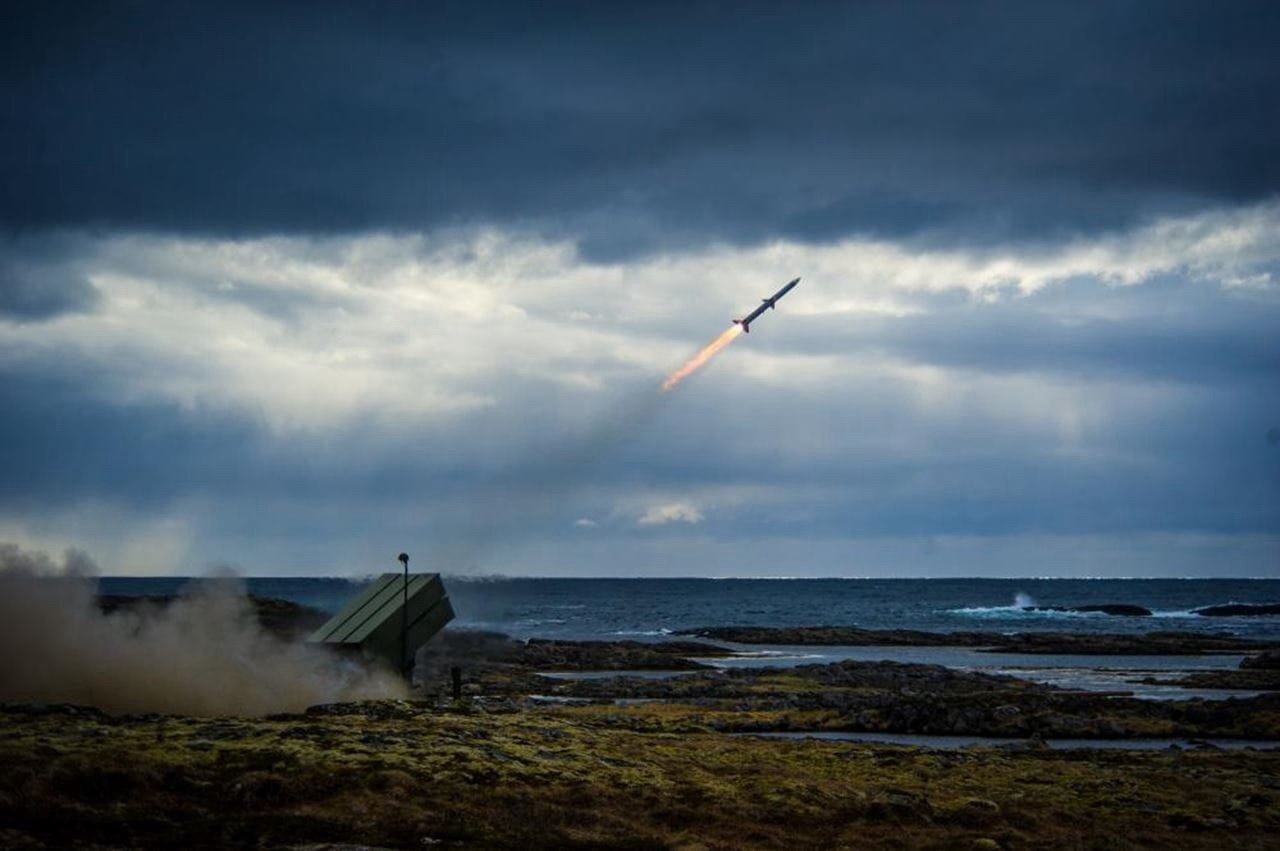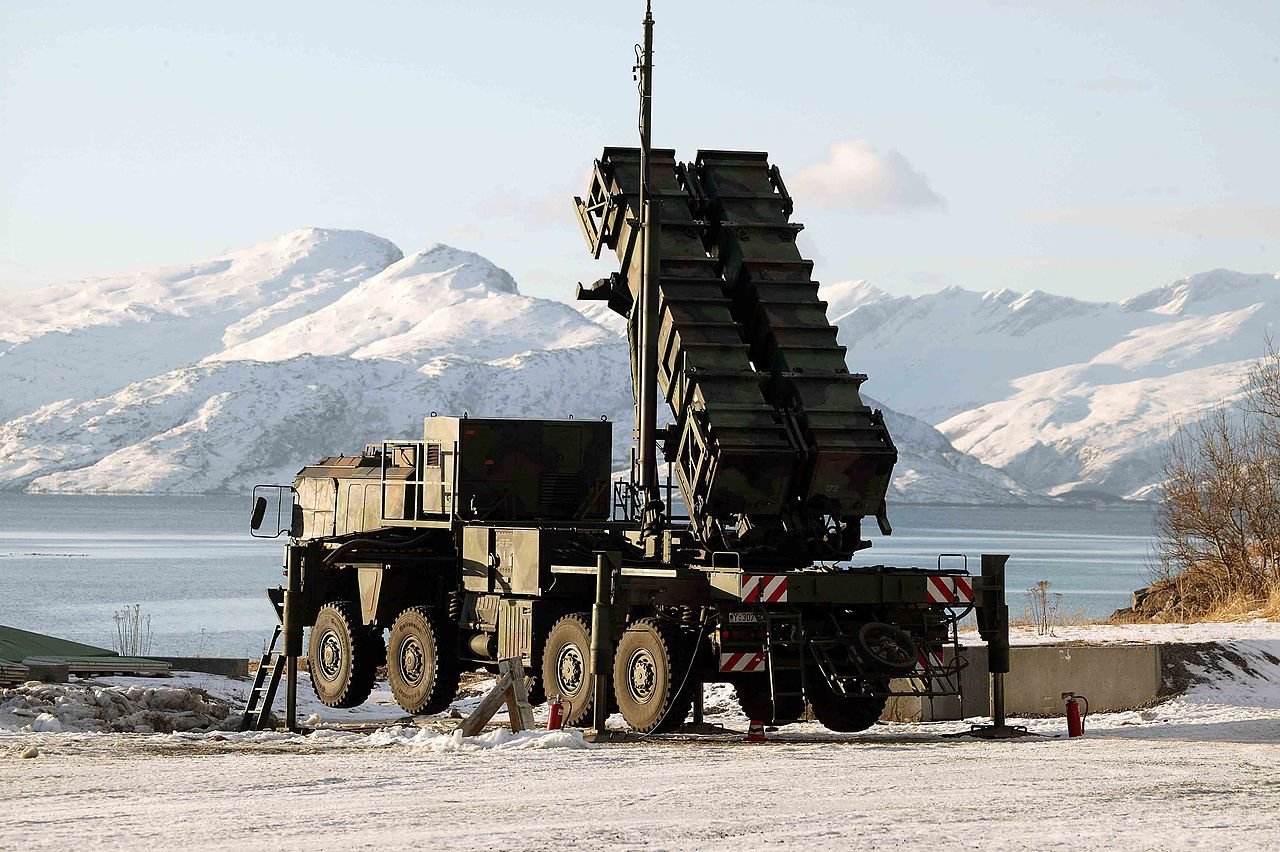
The National Advanced Surface-to-Air Missile System, also known as NASAMS, is a highly adaptable midrange solution for any operational air defense requirement. Raytheon Technologies photo.
Since invading Ukraine in February 2022, Russian forces have frequently attacked Ukrainian cities with airstrikes and cruise missiles. As a result, Ukrainian officials have repeatedly called on Western leaders to supply their beleaguered military with weapons to help counter Russia’s aggressive aerial bombardment campaign.
The Pentagon was quick to respond to Kyiv’s request for arms, promising to deliver sophisticated air defense systems to the armed forces of Ukraine in 2022. Within a matter of months, the Americans had already started to make good on that promise, sending a pair of National Advanced Surface-to-Air Missile Systems, or NASAMS, to the war-torn country.
The handful of countries that own NASAMS use the ground-based air defenses to protect civilian centers and strategic locations, such as government buildings and military installations. For nearly two decades, a network of NASAMS has guarded Washington, DC, day and night.
Missile defense is a numbers game. If the attacker has more missiles than the defender has to counter them, then the attacker can overwhelm and ultimately break through the deterrents to strike their targets. The two NASAMS that Ukraine received from the US have plugged gaps in the country’s depleted air defenses. Washington has pledged to deliver six more NASAMS to Ukraine by the beginning of 2025.
From the good to the bad, here is a breakdown of what you should know about the game-changing, multi-million-dollar air defense system that has been helping to thwart Russia’s aerial strategy in Ukraine since November 2022.
Related: As Russia Ups Air Attacks, US-Built NASAMS Air Defense Missiles Arrive in Ukraine

Emergency workers clear the rubble after a Russian rocket hit a multistory building, leaving many people under debris in the southeastern city of Dnipro, Ukraine, Jan. 14, 2023. AP photo/Evgeniy Maloletka.
Going the Distance
Since the second-gen NASAMS debuted in the late 2000s, the battery has typically included 12 missile launchers, each carrying up to six missiles. With that, a fully loaded system can engage more than 70 targets simultaneously.
The NASAMS’ missile canisters are often loaded with dozens of AIM-120 Advanced Medium-Range Air-to-Air Missiles, or AMRAAMs. The million-dollar missiles are the same weapons US fighter jets carry to take down enemy aircraft. Since it was first fielded more than three decades ago, the AIM-120 and its variants have flown on more aircraft than any other air-to-air missile. During that time, the missile has downed 10 planes, the first in 1992 when an F-16 pilot took down an Iraqi jet.
When armed with its standard loadout of AMRAAMs, the NASAMS is capable of intercepting unmanned aerial vehicles, cruise missiles, and aircraft from a maximum range of roughly 25 miles. However, if something like a building or a mountain obstructs the NASAMS’ line of sight to its target, the weapon’s radar can’t lock onto the object and the interception fails. For this reason, the NASAMS’ actual effective range is often less than advertised.
Related: Russia Responds to Ukraine’s ‘Tanksgiving’ With Missile and Drone Strikes

An F-15E Strike Eagle from the 40th Flight Test Squadron prepares to fire an Advanced Medium-Range Air-to-Air Missile near Eglin Air Force Base, Florida, Feb. 26, 2020. US Air Force photo by Tech. Sgt. John Raven.
The Latest Tech
The third-generation NASAMS — which launches extended-range AMRAAMs — was first deployed a few years ago. When fired from the NASAMS-3, the extended-range missiles can fly higher than their predecessor weapon and eke out an extra 5 or so miles of range.
The NASAMS-3 was also engineered to fire shorter-range missiles, including the AIM-9X Block II Sidewinder, an agile seeker best known for its ability to home in on fast-moving cruise missiles. When launched from the NASAMS-3, the AIM-9X can effectively hit targets from a distance of about 10 miles.
It isn’t known which NASAMS model the US delivered to Ukraine. However, after the military aid was announced, some experts surmised that Washington would send older models. The NASAMS-2 is still in service in the US, but the original model has been phased out of the American arsenal.
Related: That Time the US Postal Service Used a Cruise Missile To Deliver Mail

In this photo taken from video and released by the Russian Defense Ministry Press Service on Jan. 23, 2023, a Su-25 ground attack jet of the Russian air force fires a rocket on a mission over Ukraine. Russian Defense Ministry Press Service photo via AP.
Flexibility for Modern Warfare
The American defense conglomerate Raytheon Technologies and Norwegian company Kongsberg Defence & Aerospace jointly developed the NASAMS decades ago. The system made its debut in the 1990s with the Royal Norwegian Air Force as the Norwegian Advanced Surface-to-Air Missile System.
In part because of its modular and open architecture, the NASAMS has endured despite the constantly evolving nature of modern warfare. Not only does the third-generation model fire the latest and greatest missiles, like the extended-range AMRAAM, but it can also be outfitted with the most cutting-edge radar.
Originally the NASAMS came equipped with AN/MPQ-64 Sentinel radar. The medium-range tracking system automatically identified inbound airborne threats, such as helicopters and unmanned aerial vehicles, and could do so from about 25 miles away.
The Sentinel eventually doubled its reach after undergoing a revamp in the mid-2000s. Then, in 2021, the GhostEye MR, a system that can see even higher and farther than the upgraded Sentinel, debuted. The GhostEye MR soon replaced the Sentinel to become the future of NASAMS radar tech.
The NASAMS’ ability to incorporate new technologies is only part of what makes it so flexible. The system’s components can function together even when separated by miles, denying adversaries the opportunity to destroy the entire weapon with one strike. The command post (known as the Fire Distribution Center), the launchers, and the radar can be dispersed up to 12 miles apart.
Related: What Is HIMARS? An Army Artillery Officer Breaks Down the US Rocket Systems Headed to Ukraine

A Phased Array Tracking Radar for Intercept on Target, or Patriot, system. Raytheon Technologies photo.
A Layered Defense
While eight NASAMS working together could intercept many targets, the system isn’t a good counterweapon for every type of airborne threat. That is why Ukrainian officials continued to ask the Pentagon for a Phased Array Tracking Radar for Intercept on Target, or Patriot, system even after they were promised NASAMS.
The billion-dollar Patriot was designed to intercept higher and faster flying threats than the NASAMS — threats like tactical ballistic missiles. The systems have shot down more than 100 such weapons in the Middle East.
The Pentagon ultimately heeded Kyiv’s request. In December 2022, Washington pledged to send a Patriot battery to Ukraine, where it will work together with the NASAMS to help plug air defense gaps, intercepting Russian missiles as they continue to rain down on Ukrainian cities.
Read Next: Embedded With US Air Force Nuclear Missile and Bomber Units

Jenna Biter is a staff writer at Coffee or Die Magazine. She has a master’s degree in national security and is a Russian language student. When she’s not writing, Jenna can be found reading classics, running, or learning new things, like the constellations in the night sky. Her husband is on active duty in the US military. Know a good story about national security or the military? Email Jenna.
BRCC and Bad Moon Print Press team up for an exclusive, limited-edition T-shirt design!
BRCC partners with Team Room Design for an exclusive T-shirt release!
Thirty Seconds Out has partnered with BRCC for an exclusive shirt design invoking the God of Winter.
Lucas O'Hara of Grizzly Forge has teamed up with BRCC for a badass, exclusive Shirt Club T-shirt design featuring his most popular knife and tiomahawk.
Coffee or Die sits down with one of the graphic designers behind Black Rifle Coffee's signature look and vibe.
Biden will award the Medal of Honor to a Vietnam War Army helicopter pilot who risked his life to save a reconnaissance team from almost certain death.
Ever wonder how much Jack Mandaville would f*ck sh*t up if he went back in time? The American Revolution didn't even see him coming.
A nearly 200-year-old West Point time capsule that at first appeared to yield little more than dust contains hidden treasure, the US Military Academy said.












